
DALAT UNIVERSITY
FACULTY OF FOREIGN LANGUAGES
LINGUISTICS 2
Áp dụng cho sinh viên từ K45
Selected and compiled by Hồ Thị Giáng Châu
FOR DLU STUDENTS ONLY, NOT FOR SALE
Lam Dong - 2023

P
PA
AR
RT
T
O
ON
NE
E:
:
M
MO
OR
RP
PH
HO
OL
LO
OG
GY
Y
–
–
T
TH
HE
E
A
AN
NA
AL
LY
YS
SI
IS
S
O
OF
F
W
WO
OR
RD
D
S
ST
TR
RU
UC
CT
TU
UR
RE
E
I. WORDS AND THEIR PARTS
For most people, the most basic and most tangible elements of a language are certainly its
words. “There’s no such word”, you’ve heard people say. Or, “What does the word futharc
mean?” Or, from someone doing a crossword puzzle, “What’s a three-letter word for
excessively?” We say that one person always uses “two-bit” words, while someone else exhibits a
preference for “four-letter” words. Intuitively, people seem to have clear notions of what a word
is.
When it comes to identifying meaningful units smaller than a word, our intuitions are not
so clear. Though we readily intuit that car, walk, sing, and tall have a single meaningful element
each and that bookstore, sunrise, and sidestep have two each, our intuitions are less certain about
the number of meaningful elements in words such as bookkeeper, sneakers, women’s,
impracticality, fenced, resumed, and presumption. This part of the book examines the
segmentation of words into their meaningful elements, the principles that govern the composition
of words from meaningful elements, and the functions of words and word parts in sentences. We
describe what it means to know a word and the ways in which a language can expand its stock of
words.
What it means to know a word
Consider what a child must know when it knows a word in its language. A child able to
utter a sentence like My new doll can cry knows much more about the word doll than the kind of
toy it refers to. The child knows what sounds make up doll and in what sequence they occur, as
well as how to use doll in a sentence. The child also knows that doll is a common noun (and hence
can be preceded by the possessive pronoun my, as here, or by an article like a plus an adjective);
that doll is a count noun (that is, it can be followed by a plural marker -s, in contrast to mass
nouns like milk and sugar, which do not take -s); and that the plural of doll is formed regularly
and is not an irregular like teeth or deer.

2
Thus, knowing a word requires having at least four kinds of information:
1. Phonological: what sounds the word contains and their sequencing (we discussed this in
the previous course)
2. Semantic: the meanings of the word (to be discussed in part 2 of the book)
3. Syntactic: what category (noun, verb, etc.) the word belongs to and how to use it in a
sentence
4. Morphological: how related words, including plurals (for nouns) and past tenses (for
verbs), are formed (a topic of this course)
Knowing even the simplest word requires that phonological, morphological, syntactic, and
semantic information be stored in the mind’s dictionary (the lexicon) as part of that word’s mental
representation.
There are certain parallels between the kinds of information stored in the lexicon and the
information that can be found in an ordinary desk dictionary. In a desk dictionary, basic
phonological, semantic, morphological, and syntactic information is found along with information
that neither children nor adult speakers need to possess in order to speak a language –
information, for example, about a word’s orthographic representation or about its etymology (the
history of its phonological development and of the semantic path it followed in getting to its
current meaning). In addition, dictionaries sometimes provide illustrative sentences for words or
actual citations from well-known sources. Obviously, children will not normally have any
orthographic, etymological, or illustrative information in their lexicon.
II. MORPHEMES: THE MEANING –BEARING CONSTITUENTS OF WORDS
We now turn to the smallest units of language that can be associated with meaning or
grammatical categories. As it happens, those units need not be words.

3
English speakers are aware that words like girl, ask, tall, father, uncle, and orange cannot
be divided into smaller meaningful units. Orange, for example, is not made up of o + range or or
+ ange or ora + nge. Nor is father made up of, say, fath and er. Such words are said to be simple
words. But many words (which are called complex words) do have more than one meaningful
part. Oranges, fathers, grandmother, asks, asked, asking, homemade, taller, and tallest have two
elements each. Other words having more than one element that contributes to their overall
meaning include beautiful, churches, supermarkets, bookshelves, and television. A set of words
can be built up by adding certain elements to a core element. For example, built up around the
core element true is the following set of words:
truer untrue truthfully
truest truth untruthfully
truly truthful untruthfulness
Speakers of English recognize that these words share a stem whose meaning or lexical
category has been modified or changed by the addition of other elements.
The meaningful elements of a word are called morphemes. In other words, a morpheme
is the smallest unit of language that carries information about meaning or function. Thus, true is a
single morpheme; untrue and truly contain two morphemes each; and untruthfulness contains five
(UN + TRUE + TH + FUL + NESS). Truer, with the two elements TRUE and –ER (“more”),
means “more true”. The morphemes in truest are TRUE and –EST (“most”); in truly, TRUE and –
LY; in untrue, TRUE and UN-; in truthful, TRUE + - TH + -FUL.
We have been using the word “meaningful” somewhat loosely, for it is only by stretching
the use of that word a bit that we can call –er in truer and –ed in looked meaningful elements.
Morphemes can indeed have meaning, as with true and look, but they can also represent a
grammatical category, such as comparative degree or past tense.
Morphemes cannot be equated with syllables. On the one hand, a single morpheme can
have two or more syllables, as in harvest, grammar, river, gorilla, hippopotamus, and
Connecticut. On the other hand, there are sometimes two or more morphemes in a single syllable,

4
as in judged (JUDGE + ‘PAST TENSE’), dogs (DOG + ‘PLURAL’), and men (MAN +
‘PLURAL’), with two morphemes each, and men’s with three morphemes (MAN + ‘PLURAL’ +
‘POSSESSIVE’).
Table 1 Words consisting of one or more morphemes
One Two Three More than three
and
boy
hunt
act
boys
hunter
active
hunters
act-iv-ate
re-act-iv-ate
Summary
Morphemes are the building blocks of words. A word may contain only one morpheme,
making it a simple word, or a word may contain more than one morpheme, making it a complex
word. Below are some hints for determining the number of morphemes that a word contains.
A morpheme can carry information about meaning or function. For example, the word
haunt cannot be divided into the morphemes h and aunt, since only aunt has meaning.
However, the word bats has two morphemes, since both bat and –s have meaning. The –s,
of course, means that there is more than one.
The meanings of individual morphemes should contribute to the overall meaning of the
word. For example, pumpkin cannot be divided into pump and kin, since the meaning of
pumpkin has nothing to do with the meaning of either pump or kin.
A morpheme is not the same as a syllable. Morphemes do not have to be a syllable, or
morphemes can consist of one or more syllables. For example, the morpheme treat has
one syllable, the morpheme dracula has three syllables, but the morpheme –s (meaning
‘plural’) is not a syllable.
Often during word formation, changes in pronunciation and/or spelling occur. These do
not affect a morpheme’s status as a morpheme. For example, when –y is attached to a the




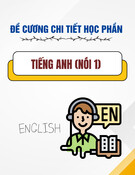
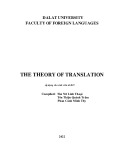
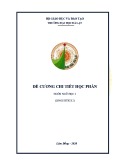
![Đề cương chi tiết Tiếng Anh thương mại 2 (Business English 2) - Trường ĐH Đà Lạt [Mới nhất]](https://cdn.tailieu.vn/images/document/thumbnail/2025/20250212/tuetuebinhan666/135x160/7211739332500.jpg)
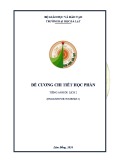
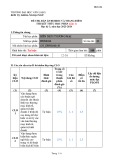
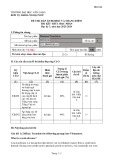
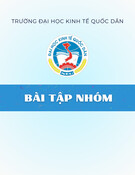
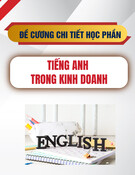
![Trắc nghiệm Tiếng Anh kinh doanh: Bài test chuẩn và [từ mô tả phù hợp]](https://cdn.tailieu.vn/images/document/thumbnail/2025/20251102/ngocanhn201@gmail.com/135x160/51201762135116.jpg)
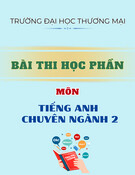

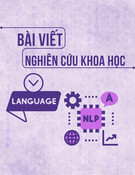
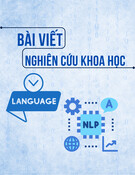


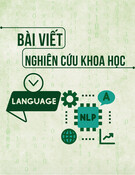

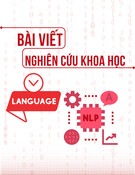
![Đề cương ôn tập Tiếng Anh du lịch (English for Tourism) [mới nhất]](https://cdn.tailieu.vn/images/document/thumbnail/2025/20250728/kimphuong1001/135x160/55271753673317.jpg)


